Sights and sands
GOA is not, as you might expect, a country but a state on the South Western coast of India. Goa’s uniqueness has been moulded by its past history, namely its colonisation by Portuguese from 1510 until 1961. That amalgamation, of Portuguese culture with Indian traditions, has created a rather special place to visit. The Portuguese ethos in Goa is evident in church architecture, the colour of houses, the blended cuisines and the beauty of cultural events celebrating Christmas and Easter.
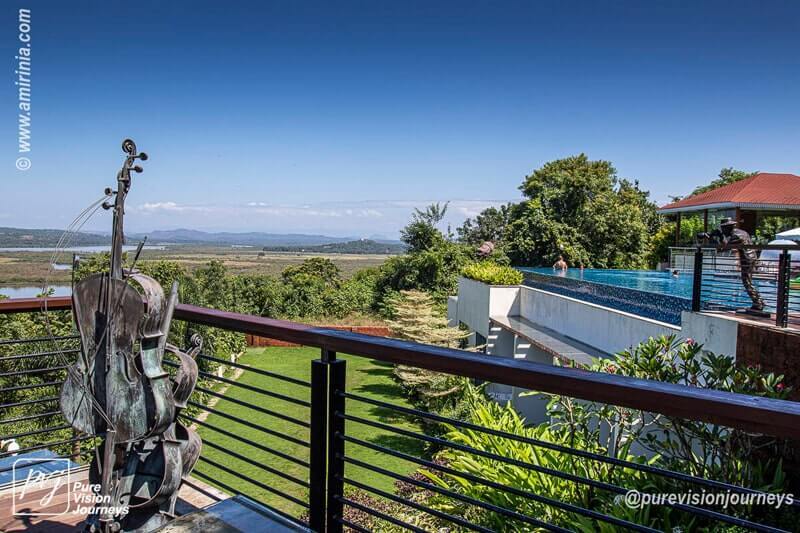 The Goa International Travel Mart 2019 was an opportunity for me to meet and network with the key players of the hospitality industry in Goa and have a good look around the region. I landed in Panaji, the capital of Goa and stayed in Double Tree by Hilton in Panaji. During the first few days of the GITM, the weather was a mixture of drizzle and heavy showers which caused the cancelation of a few tours. The hotel’s infinity pool overlooking Mondavi River was the best option to spend time swimming and enjoying Goa’s landscape beauty.
The Goa International Travel Mart 2019 was an opportunity for me to meet and network with the key players of the hospitality industry in Goa and have a good look around the region. I landed in Panaji, the capital of Goa and stayed in Double Tree by Hilton in Panaji. During the first few days of the GITM, the weather was a mixture of drizzle and heavy showers which caused the cancelation of a few tours. The hotel’s infinity pool overlooking Mondavi River was the best option to spend time swimming and enjoying Goa’s landscape beauty.
My guide Francis Xavier Fernandes, known as F.X. drew a mental picture for me, dividing the region into two districts, North Goa and the South Goa. F.X’s excellent knowledge as a professional tour guide helped to shed light on my experiences on this journey of discovery. Each region has a different feel and ambience with a variety of attractions, a mixture of culture, heritage and architecture. Of course, a major draw for visitors is the pristine sandy beach stretching out along the 160 kilometres of coastline that is lapped by the Arabian Sea.
 The Old Goa
The Old Goa
One of the must-see places to visit is Old Goa, a sub-district of North Goa, located along the banks of the Mandovi River. This historical neighbourhood which is a UNESCO World Heritage Site is in the east of Panaji. Its central location in the region made it an obvious choice to be the capital of the Portuguese from the 16th century. There are many fascinating remains of architectural monuments from that colonial era.
Se Cathedral
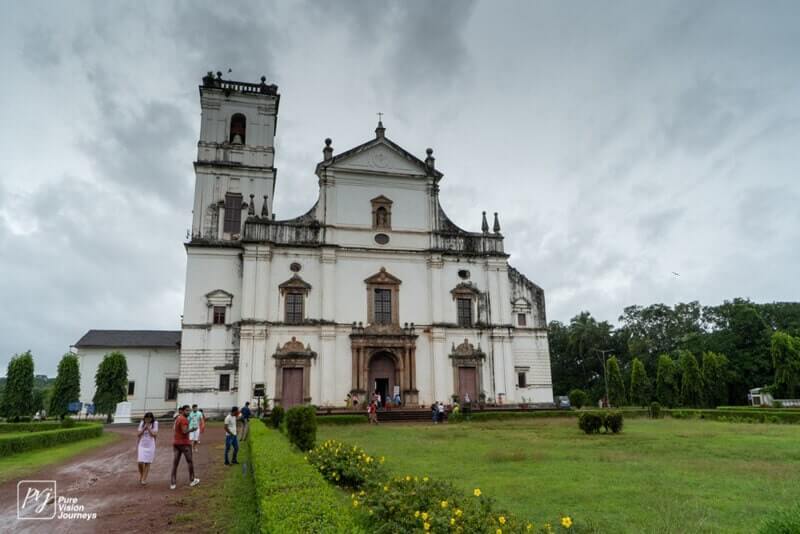 I arrived at the first attraction on my list to visit a white church standing in a large green garden with the well-maintained flower beds. The Se Cathedral, a Roman Catholic Church, was commissioned to be built in 1562 to commemorate the victory of the Portuguese army and the capture of Goa. The Se Cathedral is one of the largest churches in Asia. Our guide, F.X. explained that the church’s only tower houses the largest bell (called Golden Bell) in Goa. Another tower collapsed in the 18th century. Inside the church, it is decorated with several paintings on both sides and includes four altars, a chapel and a water fountain. The guide explained that the fountain was believed to have been used by St. Francis to baptise converts. Because it was raining we couldn’t spend much time enjoying the cathedral’s gardens.
I arrived at the first attraction on my list to visit a white church standing in a large green garden with the well-maintained flower beds. The Se Cathedral, a Roman Catholic Church, was commissioned to be built in 1562 to commemorate the victory of the Portuguese army and the capture of Goa. The Se Cathedral is one of the largest churches in Asia. Our guide, F.X. explained that the church’s only tower houses the largest bell (called Golden Bell) in Goa. Another tower collapsed in the 18th century. Inside the church, it is decorated with several paintings on both sides and includes four altars, a chapel and a water fountain. The guide explained that the fountain was believed to have been used by St. Francis to baptise converts. Because it was raining we couldn’t spend much time enjoying the cathedral’s gardens.
The Basilica of Bom Jesus
This impressive red brick built structure, constructed in 1594, has made it one of the iconic monuments in Goa. The façade of this world heritage church has been designed in the baroque style with gracefully curved elements, bordered with dark granite. As I entered the church, I could see gold-plated columns decorated with Latin inscriptions. The church interior is painted white. 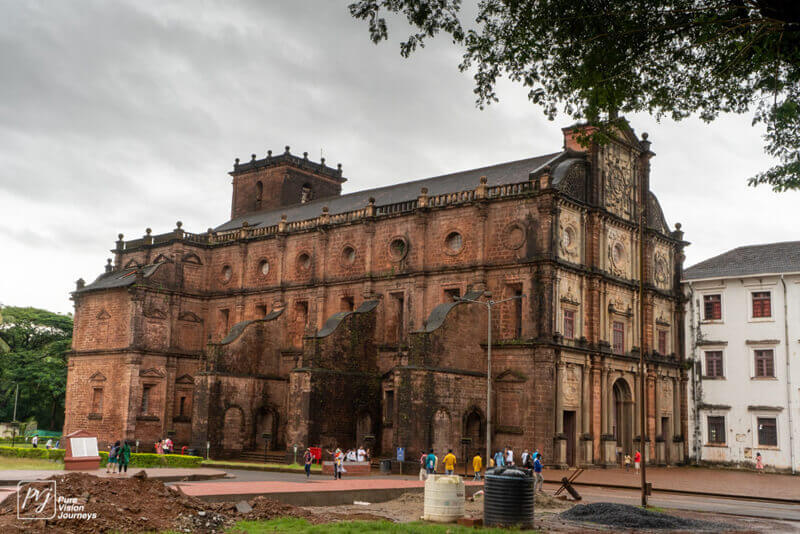 F.X. said that the Basilica of Bom houses the remains of St Francis Xavier, who was a Jesuit and the co-founder of the Society of Jesus which was established in 1552. Our guide eagerly talked about the cultural significance of the churches in Goa and explains that Christianity in India started in Goa.
F.X. said that the Basilica of Bom houses the remains of St Francis Xavier, who was a Jesuit and the co-founder of the Society of Jesus which was established in 1552. Our guide eagerly talked about the cultural significance of the churches in Goa and explains that Christianity in India started in Goa.
I had to end my tour in this part of Old Goa because of the continuous rain. I asked F.X. why there were no houses around the churches. He explained that there was a plague across Goa in the 17th century which devasted the city. There were many dead and the survivors fled to other areas. The population was so significantly reduced that the city was abandoned and new Goa was established in Panjim, a village only 10 kilometres away. Afterwards the abandoned city was called ‘Velha Goa” or Old Goa.
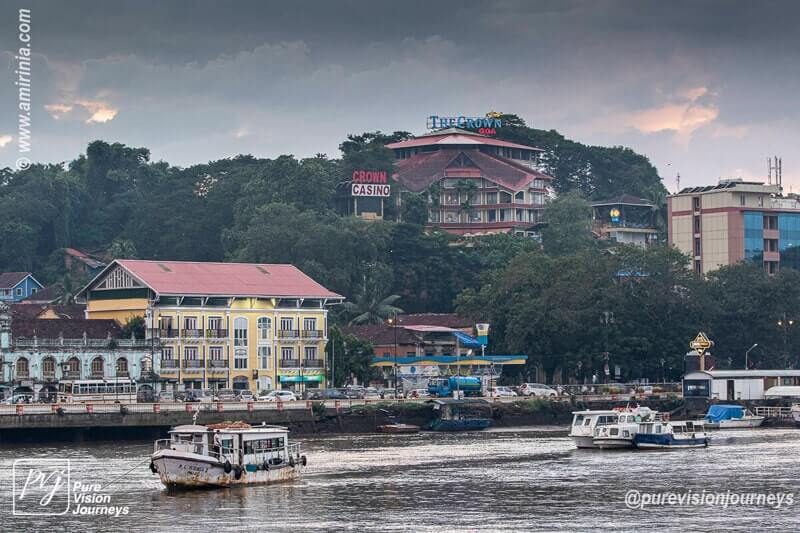 The above visits gave me a brief glimpse into the attractions of Old Goa, but my real journey started when the Travel Mart ended, and I managed to have a good exploration of the best places in Goa accompanied by F.X.
The above visits gave me a brief glimpse into the attractions of Old Goa, but my real journey started when the Travel Mart ended, and I managed to have a good exploration of the best places in Goa accompanied by F.X.
Part two of my visit opens up the wide horizons of Goa and its many attractions.
More information
For more information about Goa, visit https://www.goatourism.gov.in
To see more of Reza’s images of Goa, go to www.amirinia.com/india.
Images and story © Mohammed Reza Amirinia
Silver Travel Advisor recommends Serenity Holidays – Goa Experience
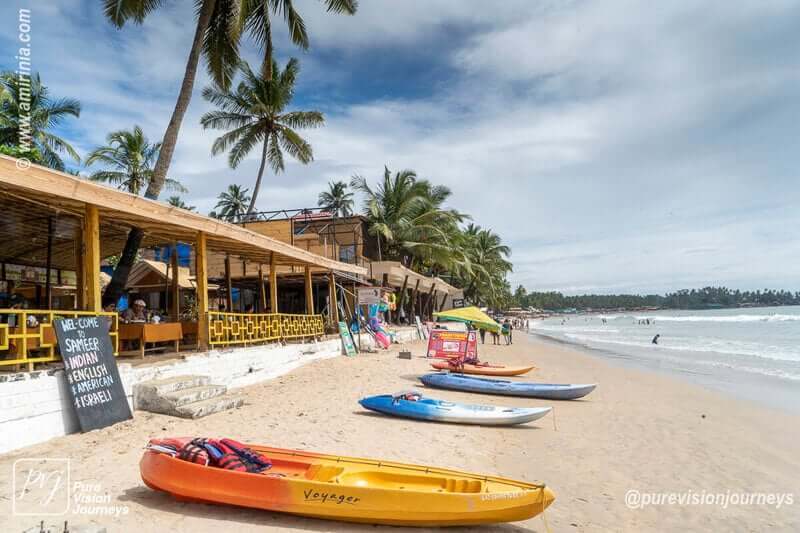 The Old Goa
The Old Goa 










